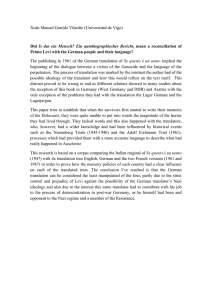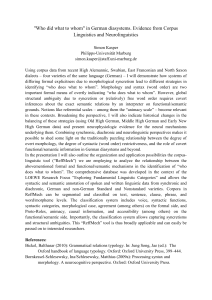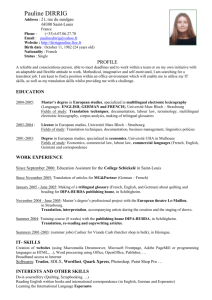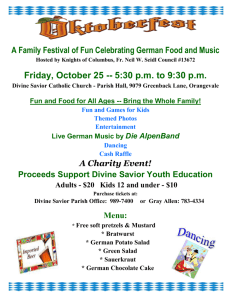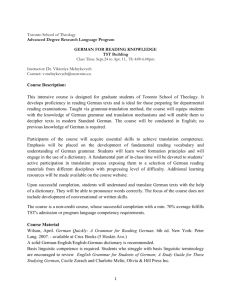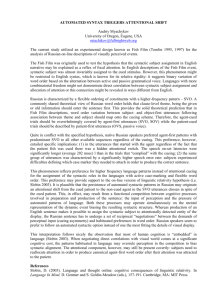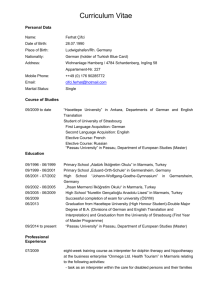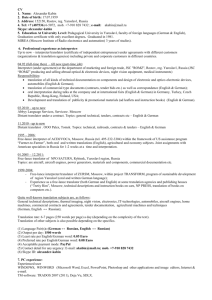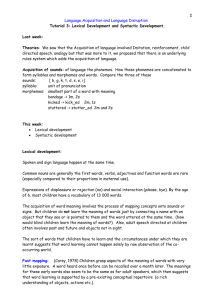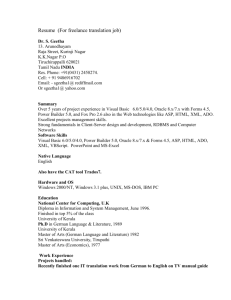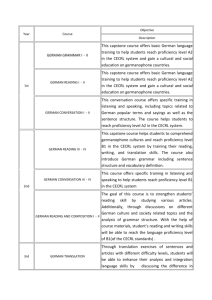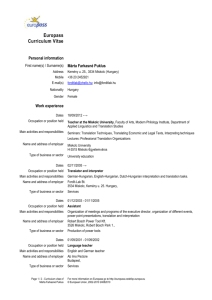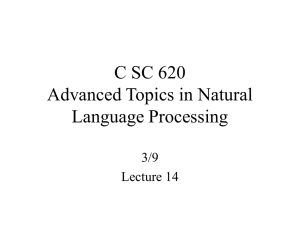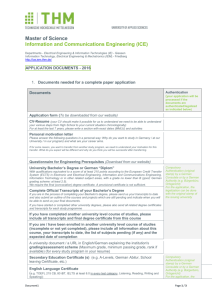TOPIC AND FOCUS ENTITIES IN GERMAN AND ENGLISH
advertisement
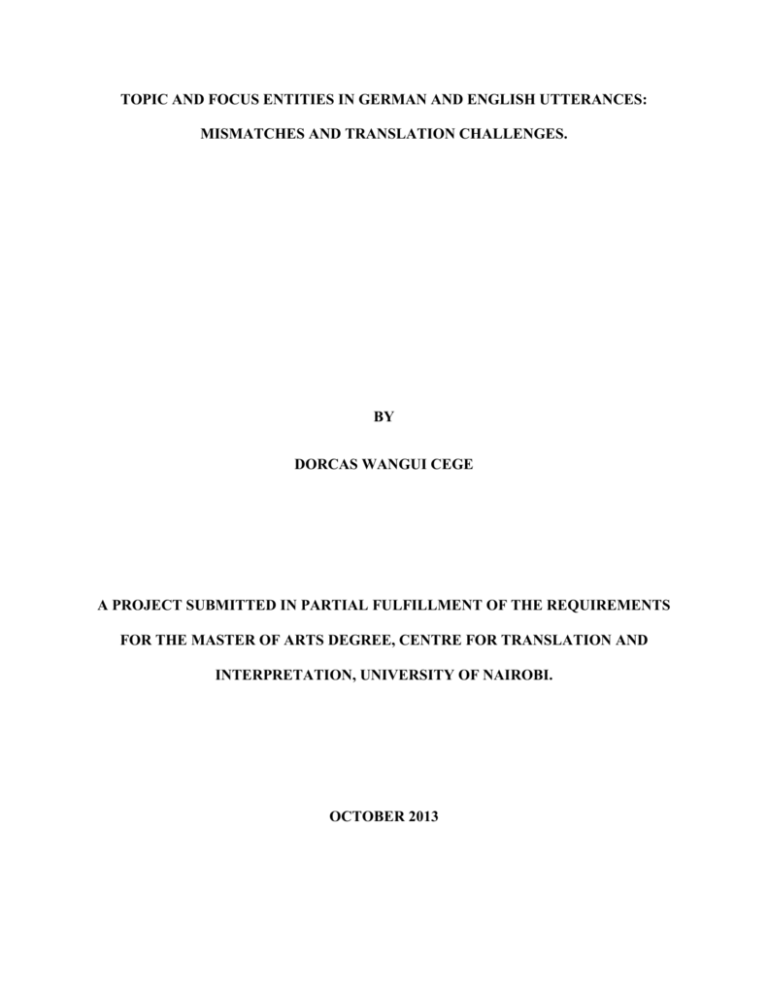
TOPIC AND FOCUS ENTITIES IN GERMAN AND ENGLISH UTTERANCES: MISMATCHES AND TRANSLATION CHALLENGES. BY DORCAS WANGUI CEGE A PROJECT SUBMITTED IN PARTIAL FULFILLMENT OF THE REQUIREMENTS FOR THE MASTER OF ARTS DEGREE, CENTRE FOR TRANSLATION AND INTERPRETATION, UNIVERSITY OF NAIROBI. OCTOBER 2013 ABSTRACT This study is concerned with a syntactic comparative analysis of information structure entities called topic and focus in German and English. Data for analysis has been extracted from two literary books namely “Das Leben kommt immers dazwischen” and its transaltion in English entitled, “And Then Life Happens”. The study has used the conceptual framework developed by Knud Lambrecht on topic and focus with the aim of seeking a better and in-depth understanding of the two notions. This provides a good background for comparing the way topic and focus are presented in German and English and their role in syntactic structures. The study is organized into five chapters. Chapter one gives the introduction and the aspects that are discussed here include; background to the study, statement of the problem, objectives, hypothesis, rationale, scope and limitations, conceptual framework, literature review, methodology and significance of the study. A conclusion has also been provided. In chapter two syntactic mismatches in marked construction in German and English have been discussed. This provides information on how German codes the accented constituents in utterances. The way these have been rendered in English has also been displayed with the objective of highlighting the mismatches that occur in the process of translation. Chapter three specifically deals with three properties of language namely; dislocation, contractiveness and use of dummy subjects and how they influence the sequencing of information nits in a syntactic structure, while also highlighting the differences that appear between German and English. Chapter four goes on to share some light on the strategies that may be used for translating noncanonical syntactic structures. Encountered mistranslations have been analyzed and recommendation given. Chapter five, the last chapter casts a glance on the whole study in that a brief summary of the research findings is given. Objectives and hypothesis have been tested, conclusions drawn and recommendation for further study in this area of syntax has also been made.

